|
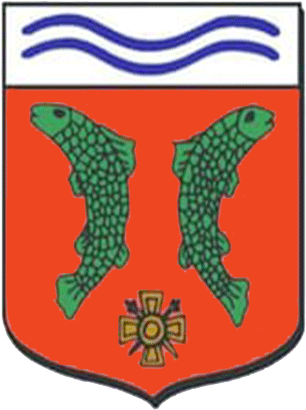
Équihen-Plage is a French town on the Opal Coast, along the
English Channel, in the Pas-de-Calais département in the
Hauts-de-France region. Its inhabitants are known as the
Équihennois (m) and Équihennoises (f).
A former fishing village, today Équihen-Plage is small seaside
resort popular with tourists for its natural, unspoilt setting,
giving it the name of "wild daughter of the sea".
The town is part of the Caps et Marais d'Opale Regional Nature
Park.
Géography :
In
Équihen, the beach is sandy and bordered by dunes. It stretches
for more than 3 km, from the Warrenne estuary (Écault) in the
south to the cliffs of Cap d'Alprech (Le Portel) in the north.
Unlike many seaside resorts, Équihen-Plage has preserved its
wild landscape and natural environment.
The population has several access points to the beach. The main
one, to the south, is the only built-up area on the seafront. It
houses a first-aid post, a shop, toilets, showers, changing
rooms as well as facilities for sand yachting, kitesurfing and
sea kayaking. Écault and Hardelot can easily be reached on foot
from this beach.
To the north, the beach can be reached via the "La Crevasse"
cove, from where a hiking trail starts along the cliffs,
offering magnificent views of the sea and continuing along the
"sentier des douaniers" for more than 2 km to the Cap d'Alprech
in the town of Le Portel.
The town of Équihen and its beach were awarded the Blue Flag
ecolabel in 2003, 2004, 2007 and 2015, a guarantee of exemplary
cleanliness and environmental quality.

History :
A
small fishing port until the early 20th century, Équihen-Plage
was a section of Outreau, which became a commune on 6 April
1939.
Its history is closely linked to that of fishing.
René Bazin, in his novel “Gingolph l'abandonné”, described the "picturesque"
landscape of Équihen-Plage, which prided itself on being a
favourite haunt of artists and painters. Caffier frequented
Équihen in the early 20th century, as did Gil Franco, Chintreuil,
Debrasse, Demizel, De Palézieux and Rik Poot, all of whom worked
and lived in Équihen-Plage, not forgetting Jean-Charles Cazin, a
painter from Boulogne, and Paul Christol, a painter from
Marseilles.
The
recently built town hall and Saint-Pierre church contain several
paintings by these artists.
In 1925, Frans Masereel bought a fisherman's cottage in Équihen
for his summer stays.
On 16 April 1912, Harriet Quimby landed on the beach after
crossing the English Channel from Dover, England.
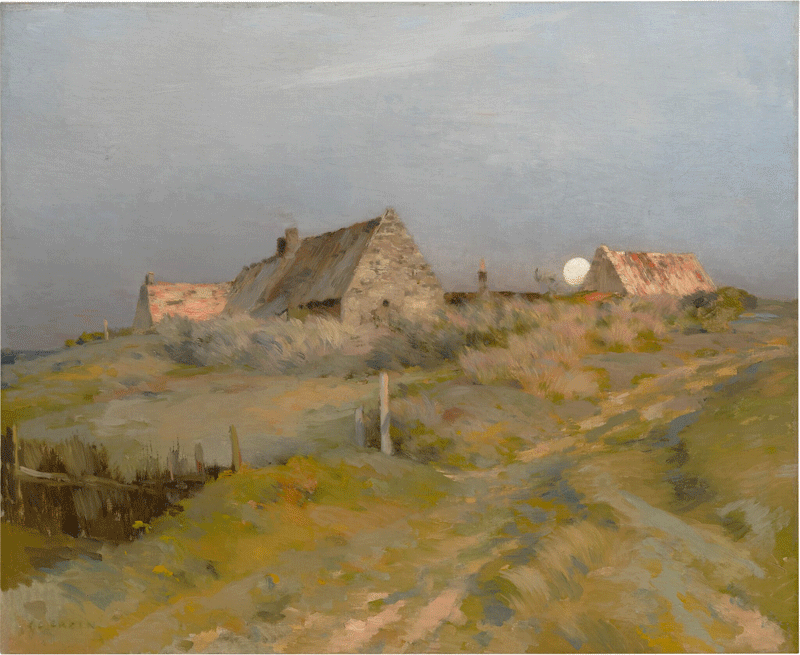
Moonrise - Charles
Cazin
Heritage and traditions :
The quilles en
l'air :
Équihen-Plage is famous for its ‘quilles en l’air’.
These installations are upturned boat hulls that were used as
homes by fishermen in the late 19th and early 20th centuries.
Most of those inhabiting these structures were poor sailors who
recycled their worn-out boats to make homes for themselves. The
painter Paul Christol transformed one of them, the "Sacré Coeur
de Jésus", into his summer residence, painting studio and
exhibition gallery.
Today, these houses are part of
the local heritage. Some of them have been rebuilt with modern
comforts and are used as accommodation in the municipal camping
site “La Falaise”, facing the sea.
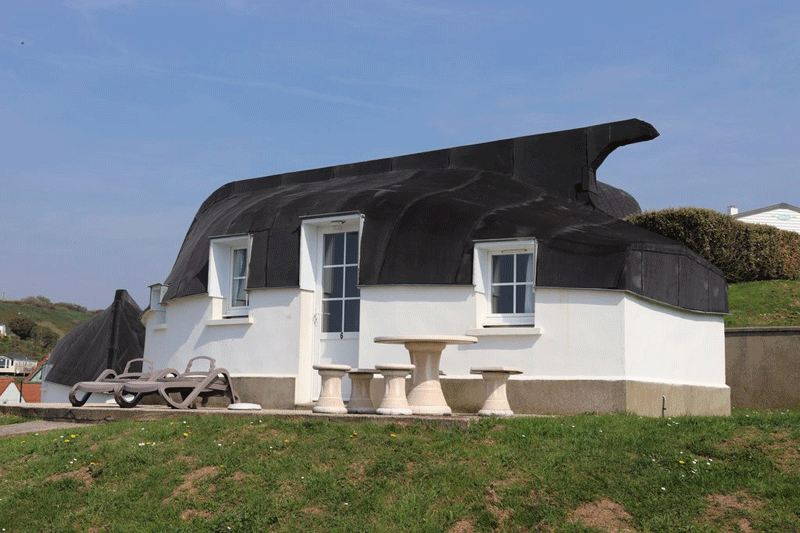
Carnival :
The
carnival of Equihen-Plage is an institution in the tradition of
the old sea carnivals. It takes place every year during the week
of Mardi Gras, and lasts 4 days :
Sunday : It's a day for making lumber, and you may be
asked by masks to buy logs, books or anything else you can find
lying around... Make sure you give them a warm welcome to keep
the tradition alive !
Monday : The Pec-Pecs (a play on the French word “pêcheurs”,
for fishermen) will be setting the school exits and the Place de
la Mairie alight! From 3.45pm, children will be able to fill up
on sweets, which they can grab with their sticks or by singing
along to the Pec-Pecs' songs.
Tuesday afternoon : Her Majesty will open the parade,
which will leave the Place de la Mairie at 3.00 pm and wind its
way through the main streets of the town.
Tuesday evening : You can choose between the ball in the
multi-purpose hall from 10.00 p.m. to 8.00 a.m. or a more
traditional evening in one of the cafés, some of which will be
open all night...
Wednesday :
Departing at 8.30am from the Place de la Mairie, the Carnivals
accompany Her Majesty to the pyre for the traditional bonfire.
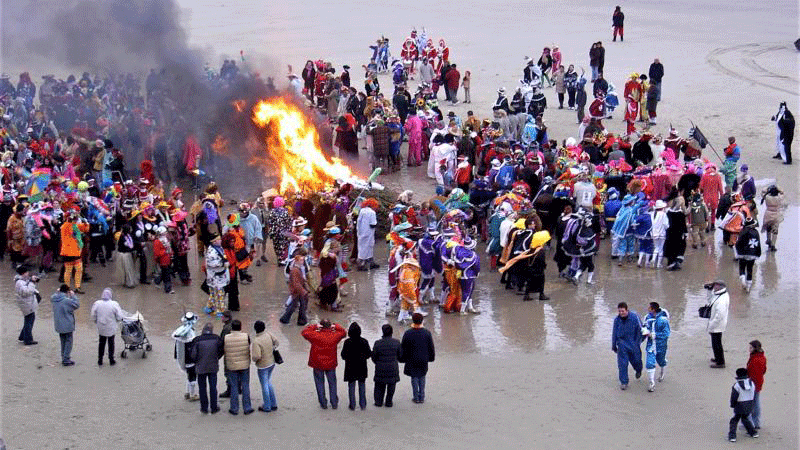
Eluise
El'moulière :
Following a partnership with the nearby town of
Saint-Étienne-au-Mont, a giant was built by young people from
the two towns with the help of the Parc naturel régional des
Caps et Marais d'Opale and local residents. The giant represents
a mussel worker in her working clothes, a spoon and a manna
hanging from her shoulders. Eluise takes part in festivals in
both towns, and can be seen in the kiosk at the Equihen-Plage
tourist office.
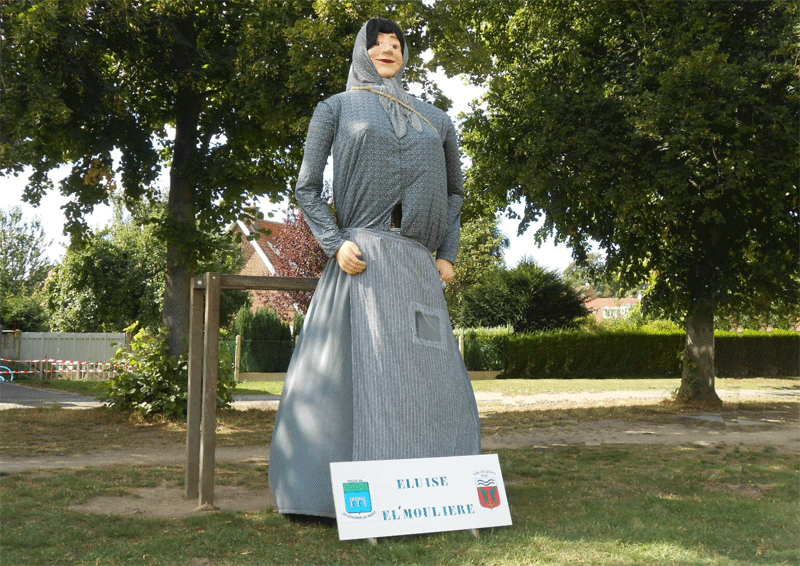
Bénédiction de la
mer :
(Blessing of the sea)
A
centuries-old maritime tradition in Equihen-Plage, the blessing
of the sea is attended by around a hundred people on Ascension
Thursday.
In the words of the priests attending, this celebration is "a
tribute to those who work in the maritime world, those who have
lost their lives at sea, those who attempt the crossing to flee
the war, around the Virgin Mary".
The
Soleil Equihennois (traditional costumes) and the pennants are
brought out for the occasion. The procession heads for the
sailors' calvary and then the beach car park, where the boats
from the Equihen nautical centre are waiting. The priests
present sing and say their prayers at the end of the morning
before continuing the day at the Falaise campsite, with the
opportunity to visit the quilles en l’air in the afternoon.
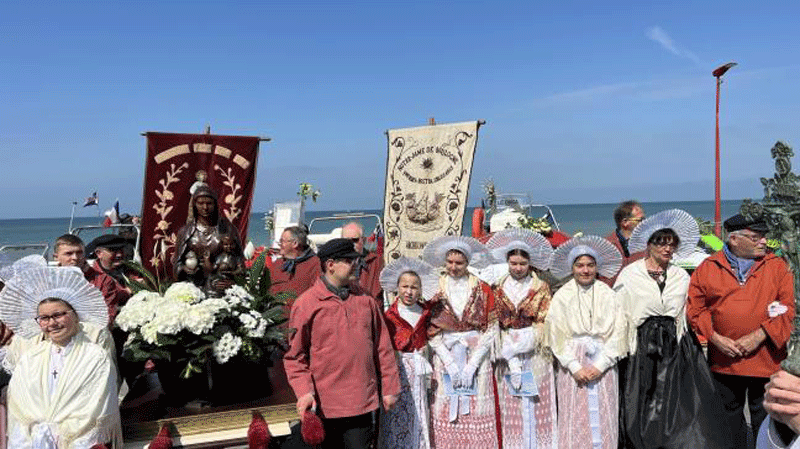
Visit the Equihen-Plage
website

Le
Suroît
Character
marine cottage





© Gîte Le Suroît - 2024 - All
rights reserved
|












